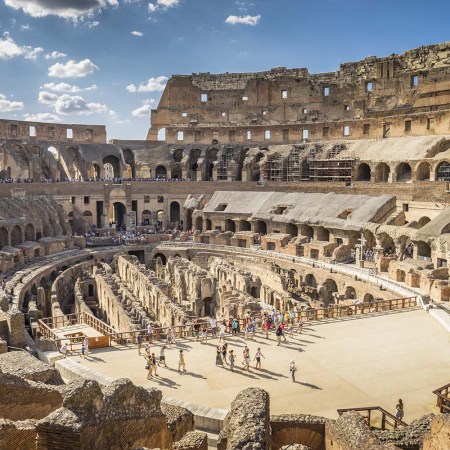When Mount Vesuvius erupted in 79 AD, Pompeii was the most well-known city devastated in the disaster, but it wasn’t the only one. Nearby Herculaneum was also adversely affected by the eruption and its aftereffects — and now it’s home to a major archaeological find relating to the event that killed thousands.
Writing at The Guardian, Angela Giuffrida covered the discovery and its implications. The archaeological dig was the first of its kind at Herculaneum in several decades — and it turned up a body that had an unnerving story to tell. Scientists found the remains of a man in his 40s who was, they believe, fleeing the blast. Giuffrida describes the location of the skeleton as “just steps away from the sea,” situated in an area that was Herculaneum’s beach at the time.
Perhaps the most notable detail — albeit a horrifying one — was the fact that the man’s bones were stained by his blood as a result of the pyroclastic flow from Mount Vesuvius.
Sadly, this man was not the only body that archaeologists have found in the area. At past digs in the 1980s and 1990s, other skeletons were found near the water, and are believed to be the remains of people waiting by the water for an evacuation that never arrived.
Dario Franceschini, the culture minister of Italy, hailed both the discovery itself and “the resumption in this place, after almost 30 years, of scientific excavations conducted by the ministry’s technical staff.” What other stories could emerge in future digs?
Thanks for reading InsideHook. Sign up for our daily newsletter and be in the know.


















